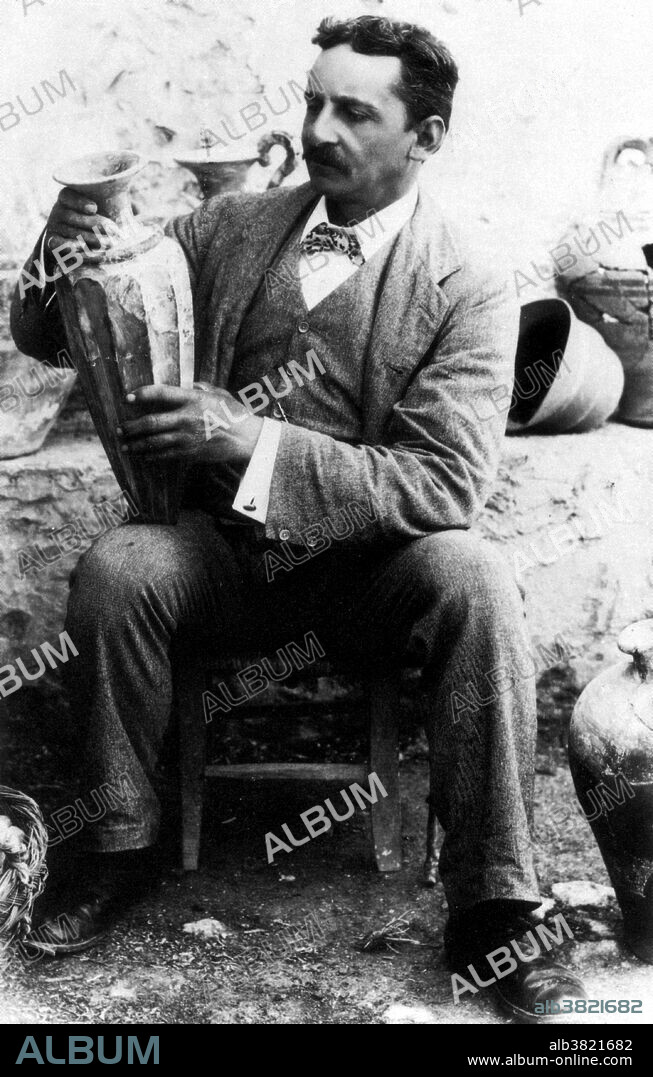alb3821682
Arthur Evans, English Archeologist

|
Añadir a otro lightbox |
|
Añadir a otro lightbox |



¿Ya tienes cuenta? Iniciar sesión
¿No tienes cuenta? Regístrate
Compra esta imagen

Título:
Arthur Evans, English Archeologist
Descripción:
Ver traducción automática
Arthur John Evans (July 8, 1851 - July 11,1941) was an English archeologist. He and Heinrich Schliemann were pioneers in the study of Aegean civilization. Schliemann had planned to excavate at Knossos, but died before fulfilling that dream. Evans bought the site, employed a staff of local laborers, and began work in 1900. Within a few months they uncovered a substantial portion of what he called the Palace of Minos. The small ruin of Knossos spanned 5 acres and the palace had a maze-like quality that reminded him of the labyrinth described in Greek mythology, so he named the civilization Minoan. By 1903, most of the palace was excavated, bringing to light an advanced city containing artwork and many examples of writing. During the excavation he found 3,000 clay tablets, which he transcribed and organized, publishing them in Scripta Minoa. He perceived that the scripts were two different and mutually exclusive writing systems, which he termed Linear A and Linear B. Despite decades of theories, Linear A has not been convincingly deciphered, nor even the language group identified. He died in 1941 at the age of 90.
Personas:
Crédito:
Album / Science Source / New York Public Library
Autorizaciones:
Modelo: No - Propiedad: No
¿Preguntas relacionadas con los derechos?
¿Preguntas relacionadas con los derechos?
Tamaño imagen:
3000 x 4704 px | 40.4 MB
Tamaño impresión:
25.4 x 39.8 cm | 10.0 x 15.7 in (300 dpi)
Palabras clave:
ARQUEOLOGIA • ARQUEOLÓGICA • ARQUEOLOGICO • ARTHUR EVANS • ARTHUR JOHN EVANS • BASES • BLANCO Y NEGRO • CIENCIA • CIVILIZACION ANTIGUA • CIVILIZACIÓN DEL EGEO • CIVILIZACION MINOICA • CRETA • EDAD BRONCE • EDAD DE BRONCE • EUROPEO • FAMOSO • FIGURA • FOTO • FOTOGRAFIA • FRAGMENTOS VASO GRIEGO • GENTE • GRECIA • GRIEGO • HISTORIA • HISTORICO • HOMBRE • HOMBRES • IMPORTANTE • INGLES • JARRON • MASCULINO • MINOICO • MYCENAEAN • OSTRACON • PALACIO DE MINOS • PERSONA • PERSONALIDAD • PERSONALIDADES • RETRATO DE HOMBRE • RUINAS • SIGLO XIX • SIGLO XX • SIR • SÍTIO
 Pinterest
Pinterest Twitter
Twitter Facebook
Facebook Copiar enlace
Copiar enlace Email
Email
